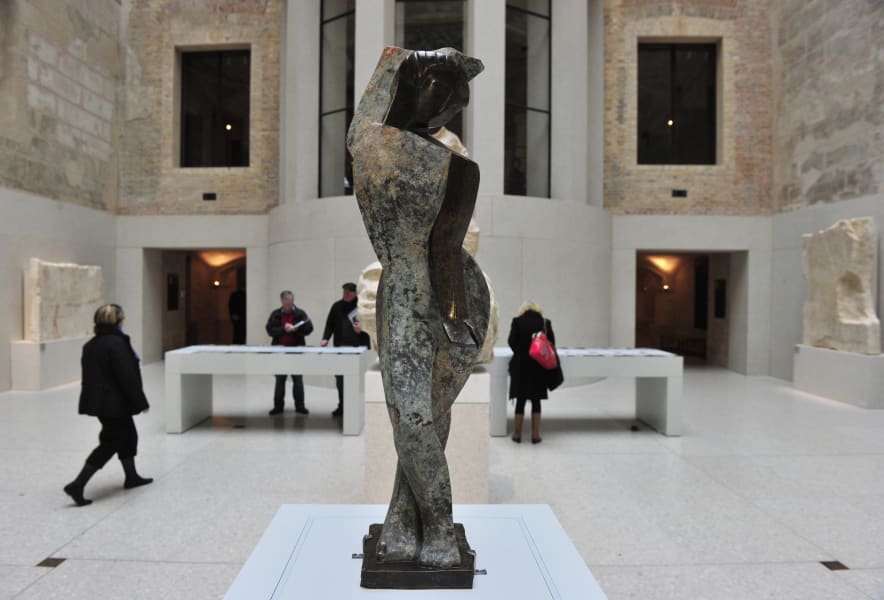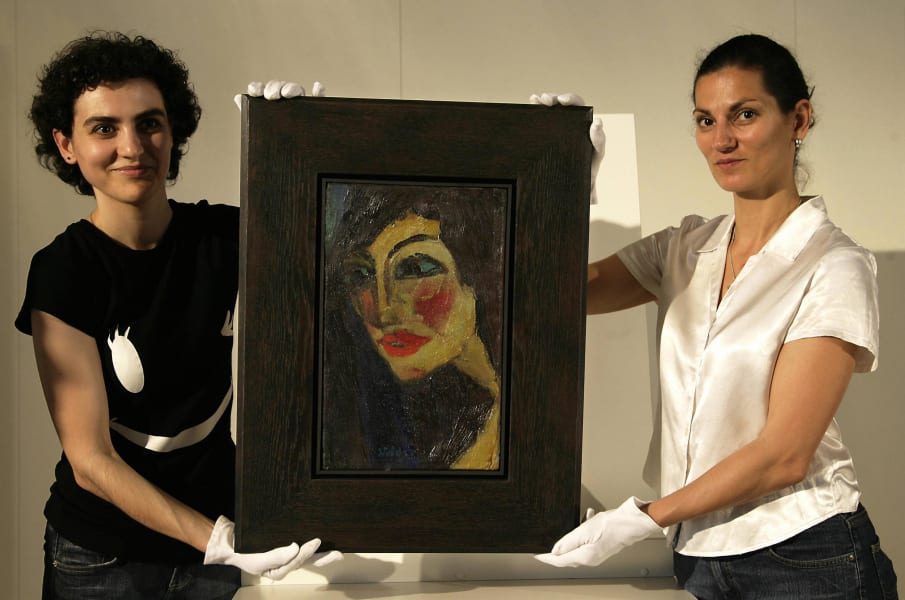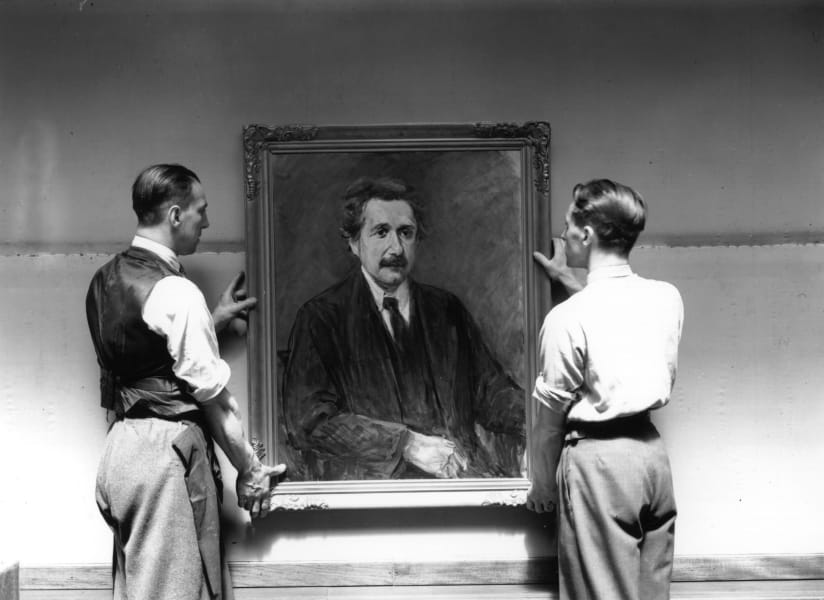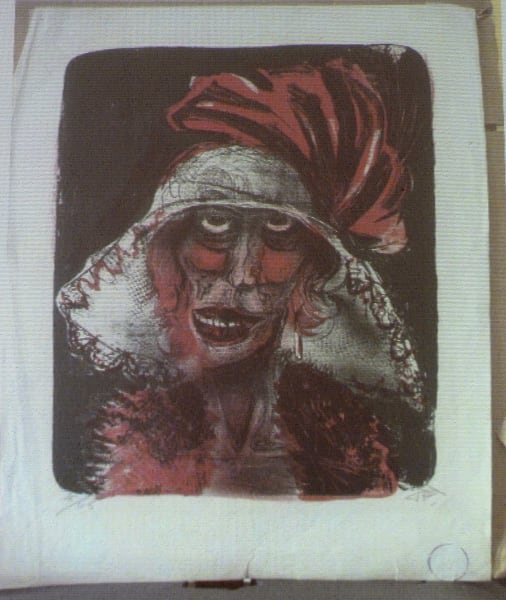Share


1 of 11
German Expressionist painter Max Beckmann was among the artists pilloried by Adolf Hitler in the "Degenerate Art" exhibition in Munich of 1937. Pictured here is his triptych 'Temptation' during a 1938 exhibition in London, which featured most of the artists ridiculed by Hitler. Topical Press Agency/Getty Images
Artists branded "degenerate" by the Nazis were banned from selling or exhibiting their work in Germany. "Portrait of Myarski" by Otto Dix was shown in the 1938 London exhibition of German art at the New Burlington Galleries. Topical Press Agency/Getty Images
The 1938 London exhibition was a direct answer to the persecution of artists in Nazi Germany. Pictured here is a portrait of Albert Einstein by Jewish artist Max Liebermann. Works by Liebermann are part of a treasure trove of art believed to have been looted by the Nazis which was found in Munich in 2012 and revealed in November 2013. Davis/Topical Press Agency/Getty Images
Austrian-born expressionist painter Oskar Kokoschka pictured standing in front of his painting in 1955. His work was labeled as "degenerate" by the authorities in Nazi Germany, prompting him to flee to Prague and then the UK, where he lived during the Second World War. Evening Standard/Getty Images
Another "degenerate artist," Marc Chagall, poses in front of one of his works in Nice, France, in 1977. A previously unknown piece by Chagall was among those found in a huge cache of artworks found in Munich in 2012. AFP/Getty Images
Nina Kandinsky, wife of the abstract painter Wassily Kandinsky, at an exhibition of her husband's work in Munich in 1976. His abstract work was considered unacceptable in Nazi Germany. Keystone/Getty Images
"The Man of the Future" by Swiss artist Paul Klee at Tate Modern in London, on October 14, 2013. As a member of the pioneering Bauhaus movement, Klee's work was pilloried by Hitler and the Nazis, and he lost his job as an art teacher in Germany. LEON NEAL/AFP/Getty Images
A reproduction of a painting by German artist Otto Dix is seen during a press conference in Augsburg, southern Germany, on November 5, 2013. The work is part of a huge collection of more than 1,300 pieces of lost art rediscovered in Munich after more than 70 years. CHRISTOF STACHE/AFP/Getty Images
German artist Marg Moll's sculpture "Female Dancer" was discovered during archaeological excavations near Berlin's town hall in 2010. At first believed to be ancient works, the sculptures were found to have toured Germany as part of the Nazi-sponsored 1937 exhibition of "Degenerate Art." JOHN MACDOUGALL/AFP/Getty Image
Buyers look at Ernst Ludwig Kirchner's "Berliner Strassenszene" ("Berlin street scene") during a New York sale. Thousands of artworks condemned as "degenerate" by the Nazis were confiscated in the 1930s and 1940s. The restitution of this painting prompted fears that Germany could lose countless pieces found to have been taken from their rightful owners. TIMOTHY A. CLARY/AFP/Getty Images
Auction assistants hold German expressionist painter Emil Nolde's portrait "Nadja," in Munich in 2007. The picture, which was considered missing for decades, was found in an attic in Germany. Works by Nolde were among those rediscovered in Munich in 2012. SASCHA SCHUERMANN/AFP/Getty Image


















